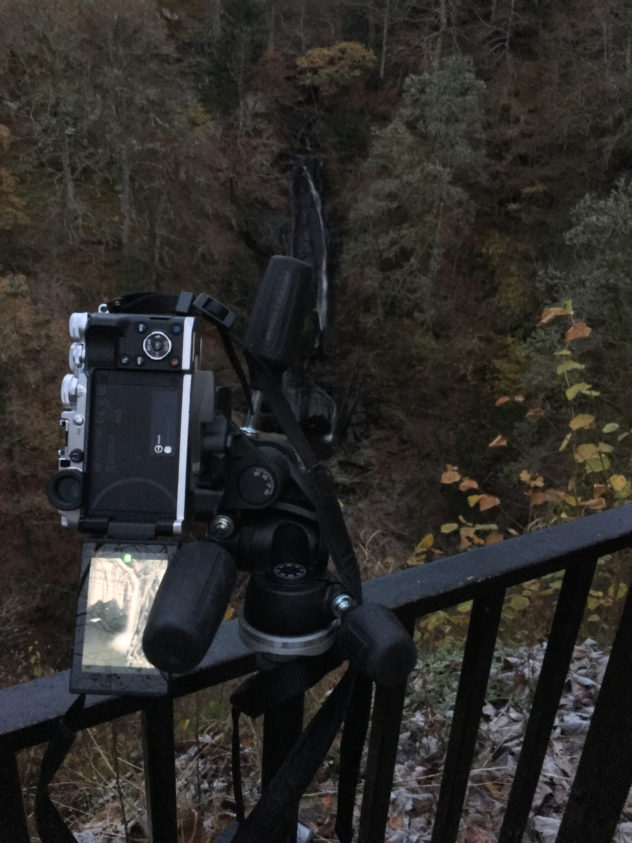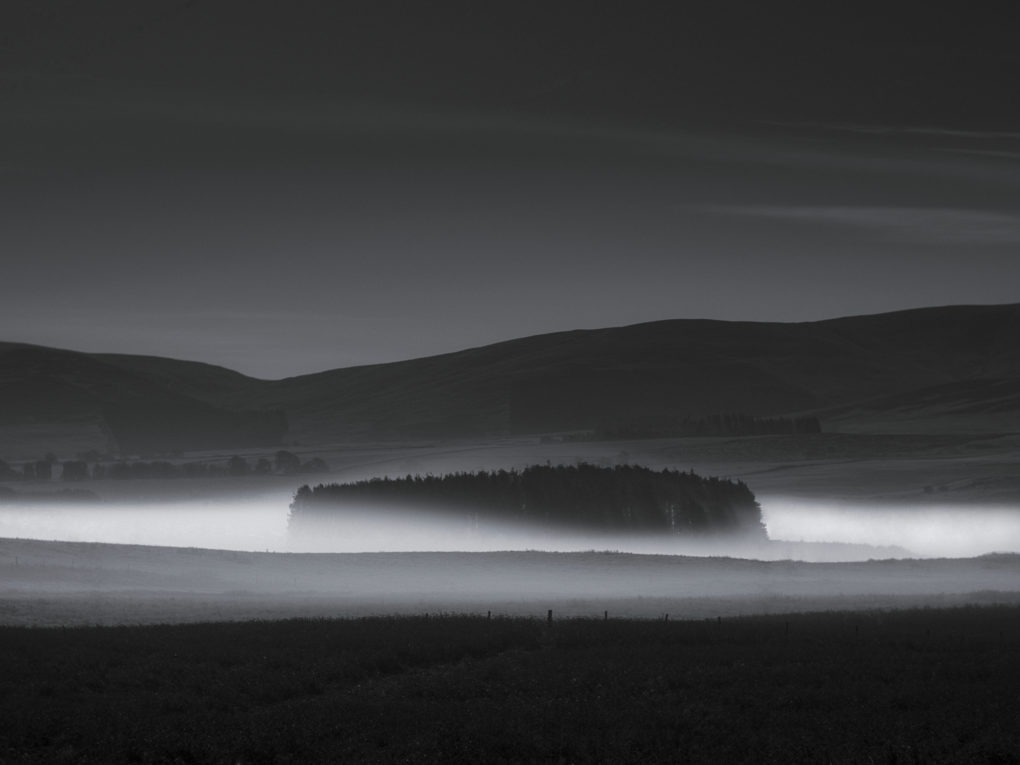Today’s random philosophical question: is landscape photography actually deterministic?
Research maps. Check weather forecast. Think about time and location and the maximization of opportunity. Take camera and go. Point it at things. Come back, process to some degree of satisfaction.
The process is certainly repeatable and it takes an incredible amount of luck to sway the results.
A couple of weeks ago, having passed by the village a couple of times this year on other travels, I set out for Acharn on the south side of Loch Tay with intention of using camera and tripod. They were duly deployed. And here are the results…
I was particularly pleased with the last pair, longish-distance zooms across the gorge to the water cascading over some very silvery-grey rock with two tree branches aligned like chopsticks beside the splash-down.
Finally, just for a sense of context, a making-of snap from the phone – this is how the last two were made:

